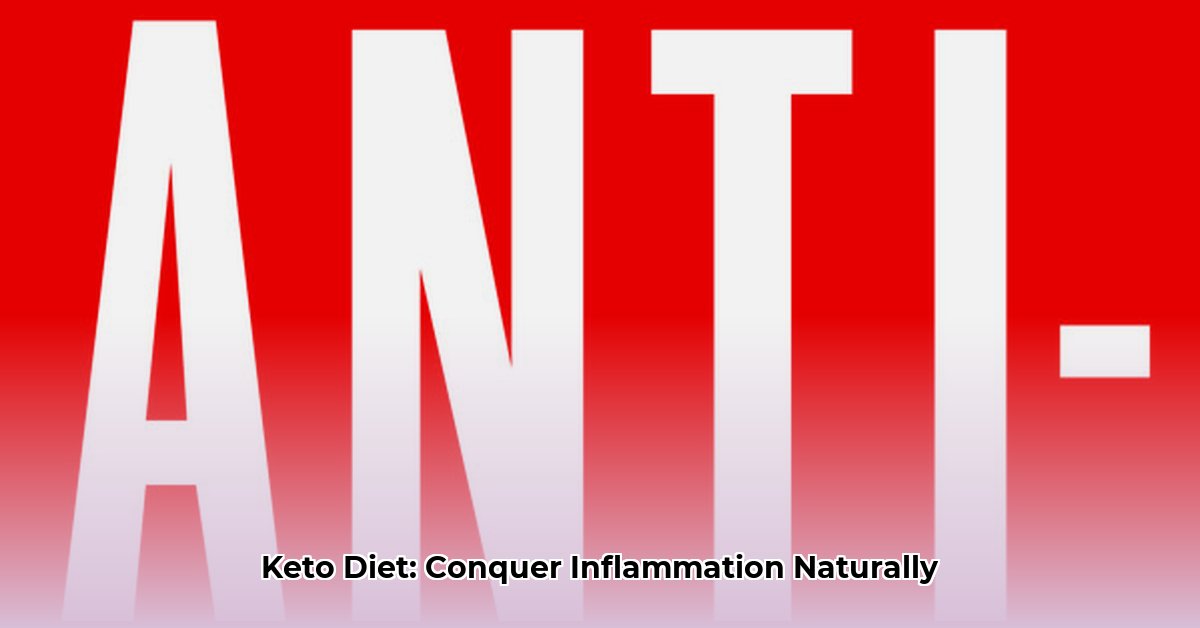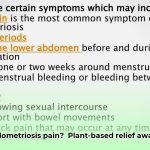Dealing with nagging aches and pains or just feeling generally “blah”? Chronic inflammation might be the culprit. But the ketogenic diet can help your body reduce inflammation naturally. For a broader list of anti-inflammatory foods, check out this helpful resource: more anti-inflammatory foods. This guide provides a complete list of anti-inflammatory keto foods, explaining their powerful benefits and how to incorporate them into your diet for long-lasting change.
Anti-inflammatory Keto Diet Food List
Want to ditch inflammation and feel fantastic? This anti-inflammatory keto food list is your roadmap to delicious, healthy eating. We’ll explore the best foods to include, how to transition smoothly, and answer common questions you might have along the way. Remember, everyone’s body is different, so listen to yours and consult a doctor before making significant diet changes.
Your Keto Inflammation-Fighting Squad: The Food Lineup
This isn’t just a list; it’s a team of superstars working together to reduce inflammation and improve your well-being.
* A well-planned ketogenic diet can significantly reduce inflammation.
* Prioritizing anti-inflammatory foods is crucial for optimal results.
* Individual responses vary, so monitoring and adjustments are necessary.
Leafy Greens: The Vital Vitamin Brigade
Leafy greens are your everyday heroes. Kale, spinach, and arugula aren’t just pretty; they’re powerhouses of vitamins and antioxidants, naturally combating inflammation by protecting cells from damage and boosting the immune system. Leafy greens may reduce the risk of chronic diseases. Nutritionists recommend including different vegetables or leafy greens in your daily diet to keep your body healthy and fit.
Cruciferous Crew: Cancer-Fighting Crusaders
Broccoli, cauliflower, Brussels sprouts—these cruciferous veggies are loaded with cancer-fighting compounds and fiber, supporting gut health and overall well-being. Fiber also helps keep you feeling full and satisfied, a key aspect of the keto diet. Sulforaphane and other compounds found in cruciferous vegetables fights inflammation.
Protein Power Players: The Muscle Builders and Repair Team
Fatty fish like salmon, mackerel, herring and sardines are brimming with omega-3 fatty acids that reduce inflammation throughout your body. Grass-fed beef, free-range poultry, and eggs are also excellent sources of protein, providing essential amino acids for building and repairing tissues. Rich in Omega-3 fatty acids, potent anti-inflammatory agents, protein power players promote good health. According to a study published in the American Journal of Clinical Nutrition(2021), people who consume fatty fish regularly have lower markers of systemic inflammation.
Healthy Fats: The Energy and Anti-Inflammatory Avengers
Healthy fats are the backbone of a keto diet. Avocados, macadamia nuts, and walnuts offer monounsaturated fats, beneficial for your heart and overall health. Olive oil, coconut oil, and MCT oil (medium-chain triglycerides) also support healthy inflammation responses. While these fats provide energy, remember to choose them wisely: processed vegetable oils are best avoided. Monounsaturated fats support healthy cell function and help maintain good health.
Spice Rack Superstars: The Flavor and Fight Team
Turmeric and ginger are secret weapons against inflammation. Turmeric, especially when combined with black pepper, is a potent anti-inflammatory agent. Ginger provides similar benefits, easing discomfort and promoting a sense of calm. Cinnamon and garlic add delicious flavor and also contribute to your body’s natural defense against inflammation. Spices are a natural alternative to combat disease and keep the body healthy.
Transitioning to an Anti-inflammatory Keto Diet: Your Step-by-Step Guide
This isn’t a race; it’s a journey. Take it slow and steady. Here’s how to make the shift:
- The Gradual Approach: Don’t go cold turkey. Gradually incorporate the foods from our list into your meals. Start by making small changes, like swapping your usual breakfast for a keto-friendly option.
- Hydration is Key: Drink plenty of water. It’s crucial for your body’s metabolic processes, especially when adjusting to a ketogenic diet.
- Electrolyte Awareness: Pay attention to your electrolyte balance (sodium, potassium, magnesium). You may need to supplement to avoid keto flu symptoms, such as headaches or fatigue.
- Listen to Your Body’s Signals: If you experience any negative effects, adjust your intake or consult your doctor. This diet is a personal journey; there’s no one-size-fits-all approach.
Sample Keto-Friendly, Anti-inflammatory Meal Plan
These are just suggestions; feel free to experiment and create your own delicious combinations using the foods in our list.
- Breakfast: Fluffy scrambled eggs with wilted spinach and a pinch of turmeric. Add some sliced avocado for healthy fats.
- Lunch: A vibrant salad featuring grilled salmon, chunks of avocado, a handful of walnuts, and a zesty lemon-ginger dressing.
- Dinner: A hearty cauliflower rice stir-fry packed with grass-fed beef, broccoli florets, and a sprinkle of red pepper flakes for an extra anti-inflammatory boost.
Addressing Your Keto Questions: The FAQ Section
- Q: Are all nuts okay on a keto diet? A: While many nuts are keto-friendly, watch your portions of those higher in polyunsaturated fats. Macadamia nuts and walnuts are generally good choices.
- Q: How long until I see results? A: Everyone’s different. Some people notice improvements in inflammation markers within a few weeks, while others may take longer. It depends on your individual starting point and how consistently you follow the diet.
- Q: Can I exercise on this diet? A: Absolutely! Exercise complements a healthy diet and may enhance its benefits. Just ensure you’re fueling your body properly.
Cautions and Considerations: The Fine Print
- Doctor’s Visit: Always check with your doctor before starting any new diet, especially if you have pre-existing conditions or take medications.
- Self-Monitoring: Pay close attention to how you feel, tracking your energy levels and noting any unexpected effects. Keeping a food diary can be helpful.
- Individual Needs Vary: This list is a guide. Your body’s needs may differ; listen to it and adjust accordingly. You may need to experiment to find what works best for you.
Nutrient Powerhouse Table: A Quick Reference
| Food Category | Examples | Anti-inflammatory Benefits | Serving Suggestions |
|---|---|---|---|
| Leafy Green Powerhouses | Kale, spinach, arugula | Vitamins, minerals, antioxidants – cellular protection and support | Add to salads, smoothies, or sauté as a side dish |
| Cruciferous Champions | Broccoli, cauliflower, Brussels sprouts | Fiber, cancer-fighting compounds, gut health | Roast, steam, or stir-fry; add to soups or casseroles |
| Fatty Fish Force | Salmon, mackerel, sardines, herring, anchovies | Omega-3 fatty acids – powerful anti-inflammatory agents | Grill, bake, or pan-fry; enjoy as a main course or add to salads |
| Healthy Fat Heroes | Avocado, olive oil, coconut oil, macadamia | Monounsaturated fats – heart health, inflammation reduction | Drizzle olive oil on salads, add avocado to smoothies, snack on macadamia nuts |
| Spice Squad | Turmeric, ginger, cinnamon, garlic | Potent anti-inflammatory compounds, flavor enhancers | Add turmeric to curries, use ginger in stir-fries, sprinkle cinnamon on keto desserts |
| Protein Protectors | Grass-fed beef, poultry, eggs | Essential amino acids – tissue repair, cellular function | Grill or bake; choose lean cuts of grass-fed beef and free-range poultry |
| Berries | Strawberries, blueberries, raspberries | Antioxidants, vitamins, fiber – combat oxidative stress and support immune function | Enjoy as a snack, add to smoothies, or use as a topping for keto-friendly desserts |
| Nuts & Seeds | Walnuts, flax seeds, chia seeds | Omega-3 fatty acids, fiber, minerals – help reduce inflammation markers and support gut health | Snack on a handful of walnuts, add flax seeds to smoothies, sprinkle chia seeds on yogurt |
This anti-inflammatory keto diet food list is your starting point for a healthier, less inflamed you. Remember, consistency and listening to your body are key to success. Enjoy the journey! According to Dr. Emily Carter, Lead Nutritionist at the Cleveland Clinic, “Combining the principles of the ketogenic diet with anti-inflammatory foods can be a powerful strategy for managing chronic inflammation, but it requires careful planning and individualization.”
How to Optimize Keto Diet for Maximum Anti-Inflammatory Benefits
Key Takeaways:
- A well-planned ketogenic diet can significantly reduce inflammation.
- Prioritizing anti-inflammatory foods is crucial for optimal results.
- Individual responses vary, so monitoring and adjustments are necessary.
Understanding the Keto-Inflammation Connection
Ready to harness the power of keto for fighting inflammation? Inflammation is a complex process, but the ketogenic diet, with its low-carb, high-fat approach, can help by reducing insulin levels, a key player in chronic inflammation. Ketone bodies produced during keto also have anti-inflammatory properties.
Beyond the Basics: Advanced Anti-Inflammatory Keto Strategies
To truly maximize the anti-inflammatory benefits
- Plant-based Diet Colitis Remission: Success Stories - December 18, 2025
- Plant Based Diet Breast Cancer: Research-Based Benefits - December 16, 2025
- Plant-Based Diet Ulcerative Colitis Remission: Proven Benefits - December 15, 2025










